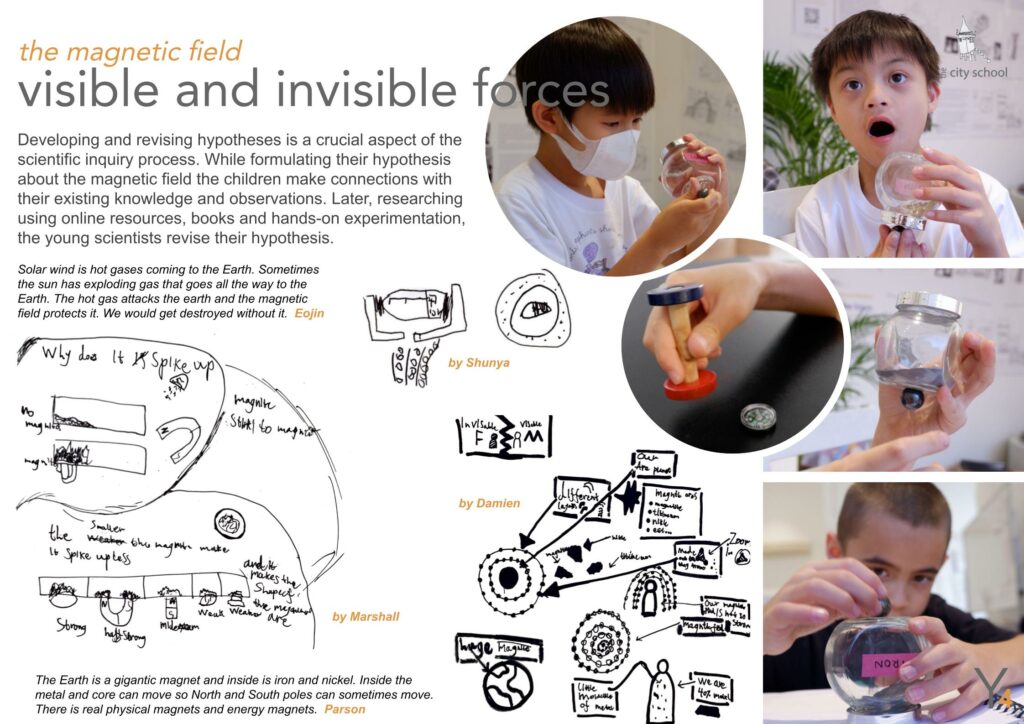For their Project this year, our Year 4 children embarked on an extraordinary journey
into outer space. The children were first challenged to explore different kinds of
journeys – be they physical, emotional, and intellectual, such as a journey on earth,
a journey of the mind, or a challenge, perhaps. Each journey, we believe, is a
repository of knowledge and wisdom. We live in a world abundant with data and
information, but wisdom is scarce, and this became an anchor point in their Project
journey. What is wisdom? Some children believed that wisdom is gained by passing
down information in their family tree, others considered it a change in knowledge
when new information is learned, others yet believed wisdom was magical, or found
in experiences, or perhaps wisdom is like a galaxy that is connected to everything in
our lives.
Inspired by the journey of the James Webb Telescope and its dazzling images, the
children’s interests in journeys gravitated to the universe. We refined our zones of
research to allow the children rich learning opportunities – to develop their research
skills, build knowledge across the disciplines, and more broadly explore their
conceptual understanding of the world. The children set about the exciting task of
inventing their very own planet. Approaching the solar system, our young
researchers encountered many intriguing and interconnected concepts – mass,
weight, gravity, speed, orbit, and distance. The children explored a solar system
simulation, changing the mass, distance or gravity force of a celestial body and
observed the effects of the change on the whole system. To help them navigate
these concepts and deepen their understanding, the children were lucky enough to
interview Dr Jessie Christiansen, a project scientist on NASA’s exoplanet archive.
The cosmos is littered with icy, gaseous, and rocky bodies, that may one day reveal
life on another world, and through Dr. Christiansen’s own commitment to the power
of imagination in space exploration, the children were excited to design their very
own exoplanet.
In this quest, the children set about understanding the fundamentals of any terrestrial
body in our universe, such as size, terrain, core, mantle, temperatures, atmosphere.
Throughout this creative journey, the children actively shared their ideas, tested their
hypotheses, and engaged in critical thinking to make informed decisions as a group.
Exploring the dimensions of the exoplanet terrain involved utilising mathematical
concepts and extrapolating how they could use their knowledge of the area of a
rectangle to measure the area of an inorganic shape. Intertwining their imagination
with their research on terrains, rock formations and water bodies on planets, the
children experimented with rocky and icy terrains and began to plan the landscape,
geography and topography, using detailed graphic representations first, and then
translating these into 3D structures using the language of paper with Mr. Mike, our
atelierista. Beyond the physical attributes of their planet, the children investigated the
invisible forces at work, particularly the magnetic field and the vital role that it plays in
keeping us alive on planet Earth. The children conducted experiments using small
and large magnets in their reaction to different metals to understand magnetism
before deciding the key elements of our core. With their growing knowledge of
magnets and magnetic fields, the children set about the iterative process of design,
adaptation, research, redesign, and testing, to create a compass.
The children used TinkerCAD a useful design tool, to translate their 2D compass designs into a 3D
reality. Alongside the compass design group, another group of children set about
designing rovers that would traverse their exoplanet. This began with mapping out
the path of the rover, considering angles, shapes, distance, and measurements. In
dialogue with our technology experts, the children used micro:bits and Cutebots,
BBC’s award winning programmable device, that includes a number of sensors and
accessories. The children faced many roadblocks as small changes can affect the
rover’s mobility. The weight of the rover, debris on the path, speed were all variables
that affected a consistent outcome, they had to make sure the rover could effectively
navigate through the exoplanet. They assessed their design thoroughly constructing
and deconstructing it to be stable and mobile, and refined their coding skills at each
stage.
Designing an exoplanet gave forth to explorations across the disciplines in math,
science, design and technology, and language arts, but more than this, throughout
this Project, the Year 4 children flourished as a collaborative learning community,
learning from each other’s perspectives, experiences, and approaches to solving
problems. This Project was truly a ‘journey of wisdom’; the children continuously
evolved their thinking and their ability to apply their ideas, not only through
knowledge building, but also through the power of their creative imaginations.










